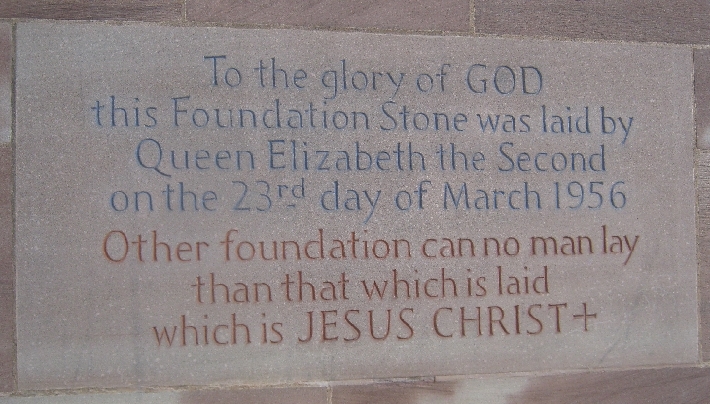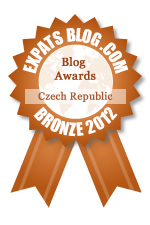My apologies for not publishing anything new here for just over three weeks. There are two main reasons for this.
The first is that I’ve been continuing my promised ‘Summer clean’, now ‘Autumn clean’, of the Chaplaincy Flat – see my answer to question three in this earlier post. The latest place to receive my attention has been the kitchen. Every cupboard has been emptied, shelves and door-fronts cleaned, crockery and glassware which hasn’t been used for a long time, has been put through the dishwasher, and numerous foodstuffs well past their ‘use-by dates’, have been quietly disposed of. And then there was the cooker hood, the oven……
The second reason is that I spent the week from Tuesday 28th October – Monday 3rd November, in the UK, visiting my new grandson and his parents, and slightly belatedly celebrating my son Phillip’s thirtieth birthday. Whilst in the UK, I also re-visited the city where I was born and spent the first eighteen years of my life – Coventry, and in particular, Coventry Cathedral.
The laying of the foundation stone of the new Coventry Cathedral by HM Queen Elizabeth the Second on 23rd March 1956, is the earliest memory that I have. For as well as laying the foundation stone that day, the Queen, along with the Duke of Edinburgh, also visited the Jaguar Car factory in Browns Lane, the street where I lived until I was ten. Thus, the royal motorcade drove past our house twice – first on its way to the factory and then the later return journey. At the time, I was just four years old and didn’t recognise the Queen on the first occasion she passed by, as I was looking for a lady with a crown on her head 🙂
Sadly, since I last visited nearly ten years ago, an entrance charge of £6.00, (recently reduced from £8.00), has been introduced for the new Cathedral, unless someone just wishes to pray or attend a service. The friendly lady on the reception desk kindly asked me if I had come to visit or to pray, to which I replied, “Both!” When I further explained, aided by my business card, that I was the Anglican Chaplain in Prague, originally a native of Coventry and that I had contributed six old pence towards one of the nave windows, her response was, “Well I’d better then let you in for free!”
I was very pleased to discover within the new Cathedral, a Czech connection of which I was previously totally unaware – this carved wooden crucifix. The adjacent notice in the photograph below, explains about the artist who created it and gave it to the Cathedral.
Other parts of the Cathedral were just as I remember them. One that I find particularly moving is the small side chapel of Christ in Gethsemane. The mosaic illustrates the prayer of Jesus in the Garden of Gethsemane, “Take this cup of suffering from me”. Yet the chapel is screened by an iron grill in the shape of a crown of thorns, a reminder that Jesus was obedient to his Father’s will.
However, much as I like the new Cathedral, it is the ruins of the original mediaeval Cathedral – what remains following its destruction by Hitler’s incendiary bombs on the night of 14th November 1940, that speak most powerfully to me.
As I explained in a post in May 2012 when I appeared on Czech TV to speak about the fiftieth anniversary of the consecration of the new Cathedral, not long after the bombing raid that destroyed so much of the mediaeval Cathedral, the Provost made a cross from two of the charred roof beams and erected it behind the altar and had the words. ‘Father forgive’ carved on the east wall of the old sanctuary.
For me, this is such a powerful symbol of the Christian message of reconciliation. Reconciliation between God and humankind – but also, reconciliation between nations and peoples who have previously been at war with each other. Therefore, I end this post with the words of the Coventry Cathedral Litany of Reconciliation.
‘All have sinned and fallen short of the glory of God.
The hatred which divides nation from nation, race from race, class from class,
Father Forgive.
The covetous desires of people and nations to possess what is not their own,
Father Forgive.
The greed which exploits the work of human hands and lays waste the earth,
Father Forgive.
Our envy of the welfare and happiness of others,
Father Forgive.
Our indifference to the plight of the imprisoned, the homeless, the refugee,
Father Forgive.
The lust which dishonours the bodies of men, women and children,
Father Forgive.
The pride which leads us to trust in ourselves and not in God,
Father Forgive.
Be kind to one another, tender-hearted, forgiving one another, as God in Christ forgave you’.









Thanks, Ricky. This was interesting. I knew the story of the Cathedral but have never visited either it or the city. I’ve heard it’s similar to Kladno.
On a tangential note, something that I’ve read about a few times in books over the years is the 1939 IRA bomb attack. Was there any memory of this when you were a nipper? Was it talked about either when you were a young adult after the (re-)start of “The Troubles” in the North of Ireland or was it a repressed memory, repressed by the nature of it being something people chose not to talk about and/or by the greater destruction wreaked by the Nazi bombing raid(s)?
A quick google to check I had the right year informs me that only today plans for a new memorial to the victims of the 1939 bomb attack have been announced.
That sort of answers my question but it’d be interesting to hear your opinion.
Thanks for both of your comments, David. I’ll quietly ignore the Kladno jibe 🙂
I knew nothing about the 1939 IRA bomb attack until I read your first comment. I had to Google it to discover what you were referring to, including the plans for a new memorial you mention here in your second comment. The greater destruction wreaked by the Nazi bombing raid(s) is I’m sure the reason I had never heard about it previously.
Lucky Sybille! You’re obviously a pearl among husbands, Ricky. 🙂
Thanks for taking me back to Coventry Cathedral. I first visited it on a school history trip soon after the consecration of the new building and was deeply impressed. Subsequent visits have only reinforced my liking for it and the wonderful artistic works which were created for it. The Chapel of Christ in Gethsemane is one of my favourites too.
Your first comment Perpetua, makes me realise that I must buy some polish for my halo 🙂
Very happy to take you back to Coventry Cathedral & to know you share my particular appreciation of the Chapel of Christ in Gethsemane.
Hi Ricky,
Thank you for a powerful and thought provoking post. I think the actions of the Provost and the words of the Litany of Reconciliation are an inspiration to all of us poor humans in these dark times. Sad to hear your city was also a victim of the pointless murderous hatred of some in my country for your country and people. How awful to be unable to see our common humanity and live in peace with each other.
Hi Sean,
Thank you for once again being such a faithful visitor & commenter here. All I can say in response to your comment is that I completely concur with everything that you say – particularly the sentiments expressed in your last sentence.
Hi Ricky, thanks for the post. I’m curious about your use of the word “sadly” to describe the introduction of an admission fee for the cathedral.
I’m not particularly up on C of E finances, but isn’t it a logical step to raise revenue for the maintenance of the building? Or what exactly is the money spent on?
Tourism in general is becoming a bit of a blight on modern cities as more and more people visit them (Prague and Barcelona are two obvious examples), so I would suggest that the more money tourists are encouraged to pay for anything, the better the “deal” for the city itself.
I looked at the York Minster website and they charge up to 15 pounds for a visit (http://www.yorkminster.org/visit-york-minster/opening-times-amp-admission.html), although the ticket is valid for a year and York residents are exempt. This sounds like a pretty good system to me.
I fully understand that a person like yourself shouldn’t have to pay to get into the cathedral of your home town, but I’d be interested to know whether you agree with the fee in principle.
Hi Jonathan, Certainly Church of England Cathedrals and Churches need money to maintain the fabric of the their buildings which is the logic behind charging an entrance fee for visitors. But I’m always very aware of the sub-conscious message that it sends – that the Church is only after your money, which is what many people do believe.
Whilst entry to Coventry Cathedral is free if you just want to pray, light a candle or attend a service, my own preference would be for the main body of the Cathedral to be open to all without cost, with an obvious place for donations for the upkeep of the building. Interestingly, the Cathedral website says that their long-term aim is to eliminate admission charges altogether – see http://www.coventrycathedral.org.uk/news-and-events/?id=471
[…] A visit to Coventry Cathedral » […]
A very poignant post! How nice to discover the wooden cross; carving any sort of religious symbol during that time, much less mailing it, seems like it would be looked down upon back then. That photo of the ruins is disturbingly beautiful – a steadfastness that could not be suppressed.
Also, the words of the litany are much appreciated; the events surrounding Ferguson in the USA have been weighing heavily on my mind and I immediately connected these words to it.
I’m glad you appreciated this post, Em. The wooden cross was a delightful discovery with it’s Czech connection. Your description of the remains of the bombed mediaeval Cathedral as ‘disturbingly beautiful’ expresses exactly how I feel about them too. And as you so rightly point out, the words of the litany are very apposite to numerous areas of conflict in our world today.